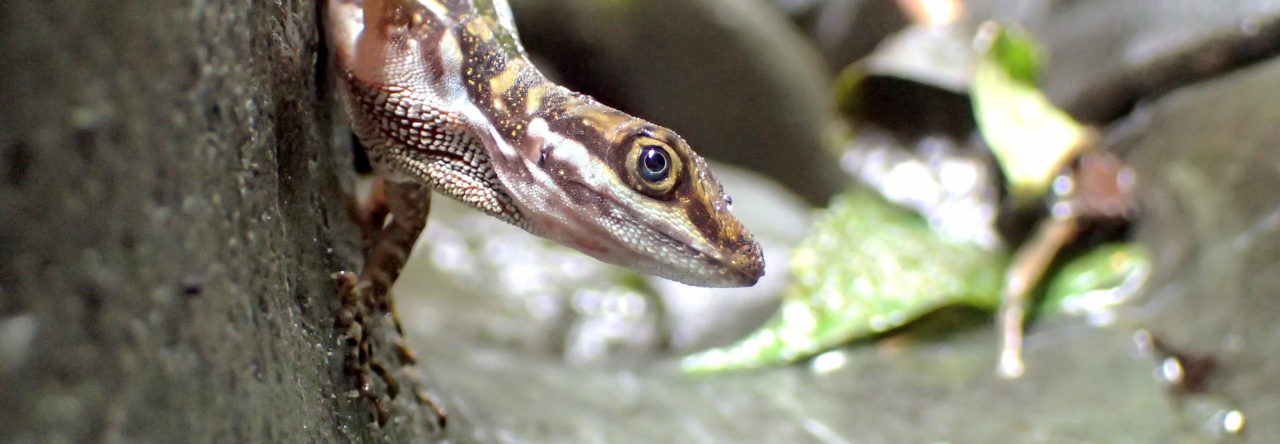
Proportion of population genetic divergence accounted for by isolation-by-environment and isolation-by-distance in 17 Anolis species (from Wang et al.)
Identifying the factors contributing to population genetic divergence is important for understanding how many evolutionary processes play out in geographical space. Plus, it’s just plain interesting. In a new paper in Ecology Letters, Ian Wang, with Anole Annals stalwarts Rich Glor and Jonathan Losos, tested the roles of environment and distance in determining spatial patterns of population genetic divergence of 17 anole species on the Greater Antilles. To give the game away (spoiler alert!), the short answer is that both play a role, with some interesting variations among islands and species. However, it’s not just Wang et al.’s results that are interesting (more on those later), but also how they went about getting them.
Wang et al. tested two (not mutually exclusive) hypotheses for population genetic divergence. The first was isolation-by-distance (IBD), where distance and dispersal barriers prevent gene flow among populations. The second was isolation-by-environment (IBE), where there is either selection against dispersers, or a preference to remain in the environment where individuals are locally adapted. To test these hypotheses for each species, the authors first quantified environmental dissimilarity among populations using the Worldclim dataset, MODIS vegetation data, and elevation. Next they measured geographic distances among populations, but with a twist. To incorporate the idea that certain environments will be easier to disperse through than others, Wang et al. constructed environmental niche models. They then used the resulting (reverse) suitability values as a proxy for the ‘resistance’ of an area to movement and calculated the weighted distance between populations using two methods: least-cost pathway and all-possible-paths (circuit distance).
Armed with these measures of environmental dissimilarity and geographic distance, Wang et al. used structural equation modeling to determine the contribution of IBE and IBD to genetic divergence (they redid the analysis a few other ways, to ensure their results were robust. Short answer: they were). They found that both IBE and IBD had a role, but that distance was of greater importance, with collinearity being much less of an issue than I, at least, initially guessed. Their results were relatively consistent across species and islands, though a few species, mostly Hispaniolan, were exceptions (you’ll have to read the paper to find out which ones). Regardless of whether you’re more interested in the general pattern across species (and islands), or in the exceptions, Wang et al.’s study will undoubtedly generate more research questions and spur future work.
Lastly, one of the paper’s aspects I liked best was how the authors used environmental niche models. Species distribution/environmental niche/ecological niche/spawns-of-hell models get a lot of flak from a lot of sources. Much of this is even deserved – however, this is often more the fault of the modeller than the model. As Wang et al. have shown, such models can still provide useful and interesting insights into ecological and evolutionary process. In fact, anole biologists are leaders in new and informative ways to exploit such models. Wang et al.’s paper certainly continues this (emerging) tradition.
Wang, IJ, Glor, RE & Losos, JB. 2012. Quantifying the roles of ecology and geography in spatial genetic divergence. Ecology Letters. doi: 10.1111/ele.12025
- With Apologies to Elizabeth Barrett Browning and Everyone Who Loves Anoles - October 6, 2021
- Forget Brexit, It’s BrAnolis: An Anole Makes the Cover of the British Ecological Society’s Bulletin Magazine, But What Species Is It? - April 12, 2018
- The Contronymic Effect of Behaviour on Evolution: Does Behaviour Promote or Retard Evolutionary Change? - November 22, 2017


1 Pingback